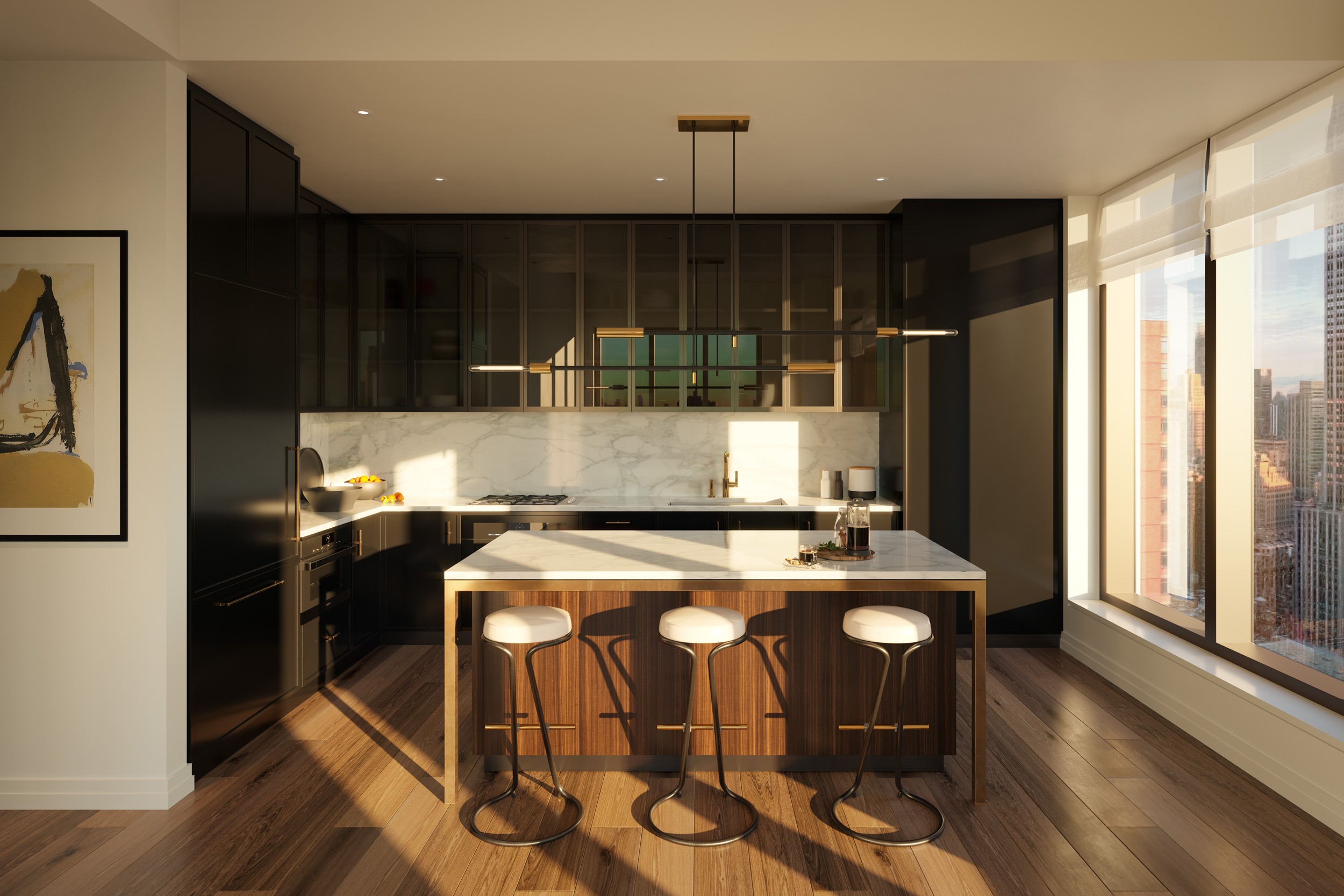View from the Visionaire, PH (Compass)As New York City begins to reopen and prepares for Phase 2, several changes are in place. More than 40 miles of city streets have been closed to car traffic to allow more room for pedestrians to practice social distancing, not to mention for outdoor dining. Non-essential retail has resumed, albeit for pickup and curbside orders only. As per Governor Cuomo’s executive order, businesses may refuse entry to anyone not wearing a mask or face covering. However, one thing that has not changed is that many New Yorkers still live in high-rise, high-density buildings.
Early in the crisis, New York City’s high population density contributed to fears of the virus’s spread. As a result, hundreds of thousands of residents left as the pandemic and ensuing stay-at-home orders hit. But as time passed, studies emerged to find that New York’s highest infection rates were in “suburban-like” areas such as Staten Island and the farthest reaches of Brooklyn and Queens; Manhattan, by contrast, had the lowest infection rate. Moreover, factors like the wealth gap, overcrowded households, unaffordable housing prices, and policies that deter people from taking sick days or seeking medical attention emerged as likelier culprits for the contagion.
Nevertheless, the idea of waiting out the pandemic in crowded buildings with faulty plumbing, poorly circulated air, several high-touch surfaces, and little room to engage in proper social distancing practices was not one that many found reassuring. But fortunately, there are things high-rise dwellers can do to lower their risks, and ways of designing future buildings to guard against future pandemics.
In the aftermath of the 2003 SARS (severe acute respiratory syndrome) epidemic, emerging Infectious Disease published a study exploring the community outbreak of SARS at the Amoy Gardens—a high-rise residential complex in Hong Kong where 329 residents, all living in the same block, came down with SARS and 42 died. The authors of the study found a notably higher viral load in patients residing in adjacent units of the same block inhabited by patient zero. They also found lower viral loads detected in patients living further away from patient zero. The study suggests that at least in the case of SARS, living next door to or even on the same floor as an infected individual increased one’s chances of contracting the virus and one’s chances of carrying a higher viral load.
Other studies on the SARS outbreak at Amoy Gardens have reached similar conclusions, and one 2006 study published in the Journal of Environmental Health even offered a possible explanation for the rapid transmission of SARS at Amoy Gardens. The researchers concluded that the virus likely traveled from unit-to-unit via faulty bathroom floor drains. In February 2020, a similar explanation was initially proposed as an explanation when a cluster of COVID-19 appeared in a Hong Kong high-rise, though faulty plumbing was later ruled out as a culprit in that case.
So, could faulty plumbing potentially spread a virus from apartment to apartment in the United States? It is generally assumed that the only way for a virus to spread from apartment to apartment via pipes is if there is no water in the U-shaped pipe traps (also known as U-traps) that connect floor drains. If devoid of water, U-traps could permit droplets containing viruses to travel through the pipes of a building. Fortunately, this is highly unlikely to happen in any New York City high-rise building since North American plumbing is designed to ensure the U-trap is never empty. But even if faulty plumbing isn’t a likely problem for New Yorkers, high-rise living may still place one at higher risk during a pandemic.
Recirculated and inadequately filtrated air is a common culprit in the spread of diseases. However, as Joseph Allen, director of the Healthy Buildings program at the Harvard T.H. Chan School of Public Health, recently observed in The New York Times, the real problem isn’t air in high-density buildings but rather how this air is managed. As Dr. Allen notes, “Buildings typically recirculate some air, which has been shown to lead to a higher risk of infection during outbreaks.” However, he also suggests that there are many things building managers and even tenants can do to mitigate the potential problems posed by recirculated air. Most buildings use low-grade filters that only capture about 20 percent of viral particles. Using a filter with a MERV rating of 13 or higher can help capture up to 80 percent of viral particles. Portable air purifiers can also help. Raising humidity levels is another strategy since, as Dr. Allen notes, viruses survive better in low humidity.
Waterline Square via Noe & Associates with The Boundary Waterline Square, a luxury three-tower development on the Upper West Side, is underscored by air and water purification systems in place long before the first case of COVID-19 was reported. State-of-the-art MERV-13 and MERV-14 multi-filter systems throughout the development filter fresh air into each home and public spaces. These top-of-the-line filters are specifically designed to prevent air re-circulation and air migration, thus ensuring that residents receive the freshest air at all times.
Further downtown, Rockefeller Group’s NoMad condominium, Rose Hill, has MERV-13 filters in the common and amenity areas for premium and fresh air ventilation. The building also features windows that can open to allow fresh air into the 123 residential units. Indeed, no matter where one lives, the most effective way to deal with potentially bad air, however, is simple—open the windows and keep them open at least a crack at all times to let air recirculate.


